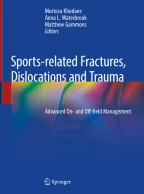
Every joint dislocation must be evaluated and treated individually, but general principles of joint dislocation assessment and management can help guide the clinician. An understanding of the mechanism of injury informs the clinician of the likely direction of the dislocation, whether possibly associated with a fracture and subsequently the best treatment and techniques. A neurovascular exam of the involved extremity is one of the most important initial steps and should be repeated and documented after any attempts at treatment. Urgent considerations include arterial or nerve injuries, open injuries, and compartment syndrome. The timing of imaging before relocation attempts depends on availability, location, and presence of urgent considerations. All relocated joints should be imaged to confirm placement and assess for associated fractures. Most relocation techniques involve a combination of traction and gentle recreation of the forces leading to dislocation. Relocated joints all benefit from a period of immobilization. Other pain control methods should be considered as indicated. Return to play is generally considered when the athlete can demonstrate full pain-free ROM and strength of the affected joint in their sports.
This is a preview of subscription content, log in via an institution to check access.
eBook EUR 181.89 Price includes VAT (France)
Hardcover Book EUR 232.09 Price includes VAT (France)
Tax calculation will be finalised at checkout
Purchases are for personal use only